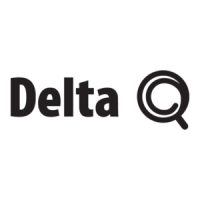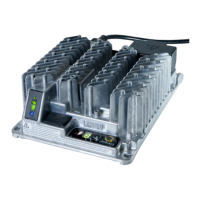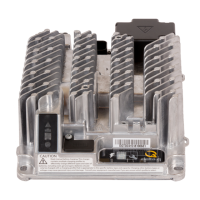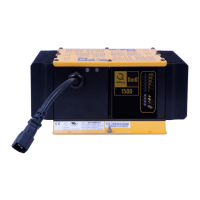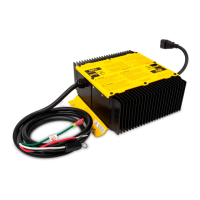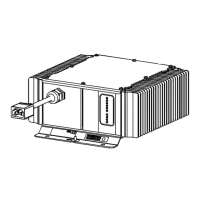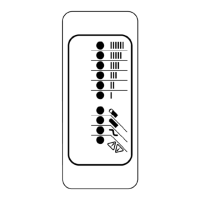Safe Operating Instructions
The charger contains up to 25 selectable charging profiles stored in its internal memory to
charge batteries. These profiles are specific to each manufacturer and model of battery. Your
equipment supplier or charger distributor is responsible for ensuring the active charge profile
matches the battery pack charging requirements. Contact them with any questions about
which profile to select for each battery pack.
The charger may become hot during charging. Use hand protection to safely handle the
charger during charging.
To maintain safe operations, the unit automatically reduces its output power if the
temperature rises above set thresholds, or if the AC input voltage is too low. The charger will
also reduce output power if it detects that the battery pack is damaged.
If power is interrupted, and then returns, the charger will start and continue to operate without
hazard to the user, or damage to the batteries.
Unplug the charger from both AC and DC sources when cleaning, moving or conducting any
maintenance or repair on the charger. No user serviceable parts inside. Do not remove the
cover due to the risk of electrical shock.
Do not expose charger to oil, dirt, mud or direct heavy water spray when cleaning the vehicle
or machine.
If the detachable AC input power cord set or DC output cord is damaged, do not use the
charger until they are replaced with cord sets appropriate to your region and application.
When mated with a Delta-Q sealed AC cord, the charger meets IP66 specifications, making
it dust-tight and protected against powerful water jets. If a cord set with an unsealed connector
is used, the plug and connector must be periodically inspected to ensure the contacts are
clean and dry.
If this charger is provided with an AC cord set and the power plug does not match the
power outlet, contact the equipment manufacturer, distributor or Delta-Q Technologies for
the correct AC cord set terminating with a 3-prong plug suitable for your regions’ grounded
power outlet.
In North America (and other 120V AC regions), the AC cord must be a 3 conductor UL
Listed/CSA approved detachable cord set at least 1.8m in length (≥ 6 feet), minimum 16AWG
and rated SJT, 105C min.; terminated with min. 125V, 13A or greater connector.
In Japan, the AC cord must be a 3 conductor PSE approved detachable AC cord set,
rated 105C, and terminated with 100V, 15A or greater connector.
In 220-240VAC regions the AC cord must be a 3-conductor safety-approved cord set,
with 1.5mm² conductors(min.), rated appropriately for industrial use. The cord must be
terminated on one end with a grounding type input plug appropriate for use in the country of
destination and both plug and connector should be rated 250V, 10A or greater.
Extension cords must be 3-wire cord no longer than 30m (100’) at 10 AWG or 7.5m (25’) at
16 AWG, per UL guidelines.
Identifying Charger Serial Number
The charger’s serial number is printed on the front of the charger above the Delta-Q logo. This is the number to
provide when requesting technical support.
Delta-Q Technologies Corp.
3755 Willingdon Ave. E-mail: support@delta-q.com
Burnaby, B.C. V5G 3H3 CANADA Web: www.delta-q.com
Phone: +1.604.327.8244 User Documentation: www.delta-q.com/resources

